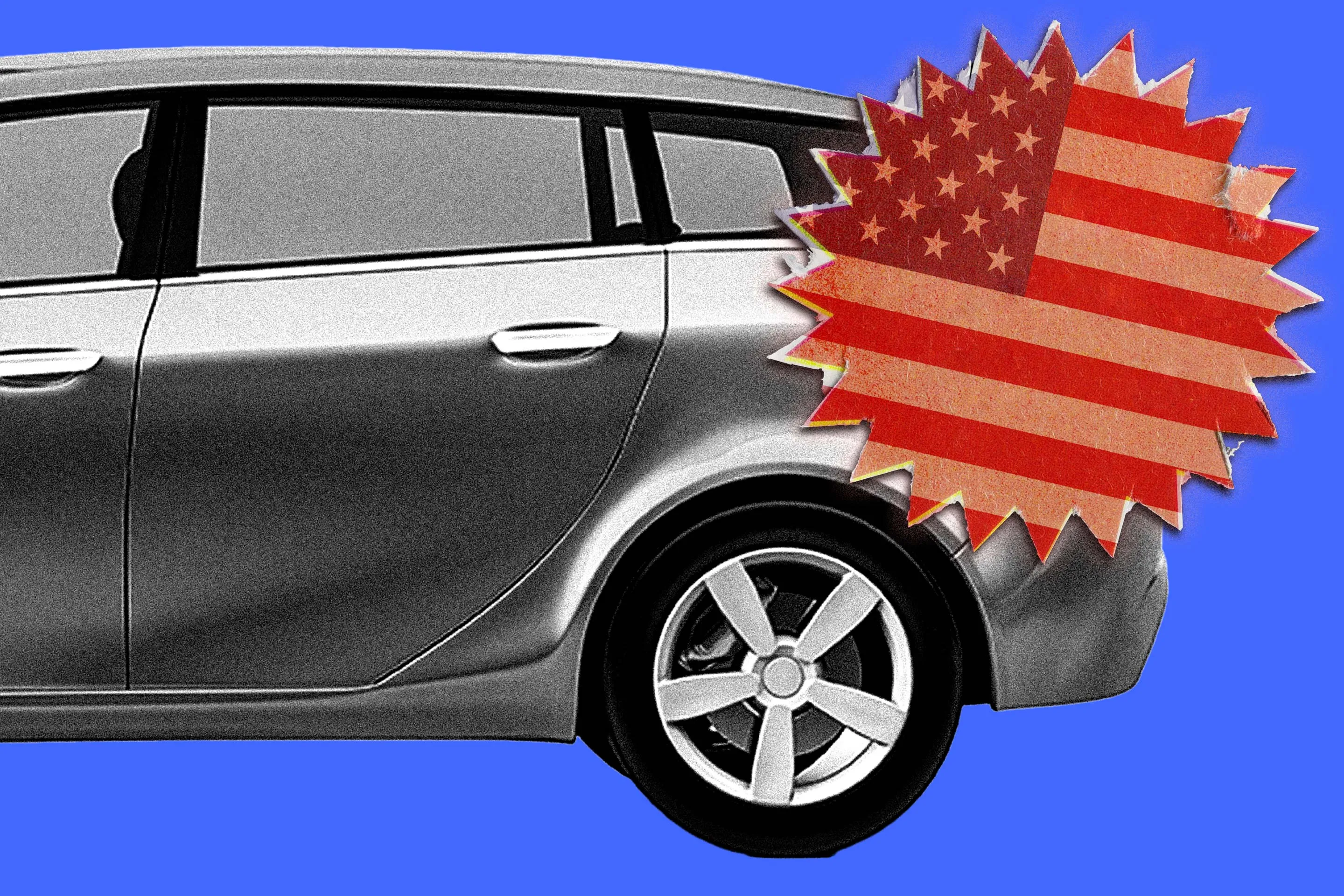How to Tell if Your Next Car Is Made in the U.S.

The auto industry is currently undergoing significant changes due to the imposition of tariffs, leading car buyers to ask a crucial question: Was this vehicle made in America? With potential price increases of up to $10,000 looming if tariffs remain in place, consumers are increasingly concerned about the origin of the vehicles they are considering purchasing.
While the immediate impact of tariffs on car prices may not be drastic, as new vehicle inventory is currently high, the long-term effects could be substantial. Automakers are faced with the decision of whether to absorb the additional costs, pass them on to consumers for specific models, or distribute the price increase across their entire vehicle lineup.
President Donald Trump has hinted that tariffs could become permanent to incentivize the return of auto manufacturing jobs to the U.S., prompting the industry to brace for significant repercussions. Experts suggest that individuals looking to avoid tariff charges should consider purchasing American-made cars or foreign vehicles imported before the tariffs took effect.
Determining a vehicle’s origin can be complex, as even American car brands may rely heavily on foreign manufacturing or parts. A car assembled in one country could contain parts sourced from numerous others, emphasizing the interconnected nature of the global auto industry.
To avoid potential tariff charges, consumers can look up where a vehicle was assembled, as this information can provide insights into its origin. The National Highway Traffic Safety Administration maintains a spreadsheet listing the final assembly location, as well as the sources of the car’s engine and transmission. Vehicles with American-made components are exempt from tariffs, offering a potential cost-saving opportunity for buyers.
Looking ahead, tariffs on car parts are scheduled to go into effect in May, meaning that vehicles assembled in America using foreign parts could soon see price increases. While most car parts from Mexico and Canada are not immediately subject to the new tariffs, the overall impact on car prices remains uncertain as the industry navigates these challenges. Officials have stated that they require additional time to establish firm processes for calculating tariffs on car parts that comply with the United States-Mexico-Canada Agreement (USMCA). This delay in finalizing the tariff calculations is crucial for ensuring that the automotive industry can smoothly transition to the new trade agreement.
However, for car parts originating from countries other than the USMCA member nations, a significant change is on the horizon. The White House has announced that a 25% tariff on car parts, including engines, transmissions, powertrain components, and electrical parts, will be implemented on May 3. This tariff increase is expected to impact automakers that rely on foreign components, potentially leading to higher manufacturing costs for vehicles produced in the US.
The impending tariffs are poised to affect a wide range of cars in the market, with few vehicles likely to escape the additional costs. The extent of the impact may vary depending on the car model, as indicated by the percentage of US and Canadian content in each vehicle. This information can be accessed through the National Highway Traffic Safety Administration (NHTSA) database or by checking the window sticker, as mandated by the American Automobile Labeling Act.
To gain deeper insights into the American-made components of a vehicle, consumers can utilize various resources from academic and industry sources. Platforms like Cars.com’s American-Made Index and the “Made in America Auto Index” developed by Frank DuBois from the American University Kogod School of Business offer comprehensive analyses of factors such as assembly location, parts origin, and manufacturing employees to determine the level of American content in a vehicle.
While the NHTSA data provides valuable insights, some vehicles may not be listed, prompting researchers to fill in the gaps through dealership visits and VIN number checks. DuBois recommends using VIN numbers to identify the assembly location of a vehicle, with specific codes indicating regions like the US, Mexico, Canada, Japan, and Korea. This method is considered more reliable than relying solely on window stickers for determining a car’s origin.
In light of these developments, it is essential for consumers to be aware of the potential impact of tariffs on car prices and the American content of vehicles. By leveraging available resources and understanding the nuances of trade agreements like the USMCA, individuals can make informed decisions when purchasing cars in the evolving automotive landscape.





